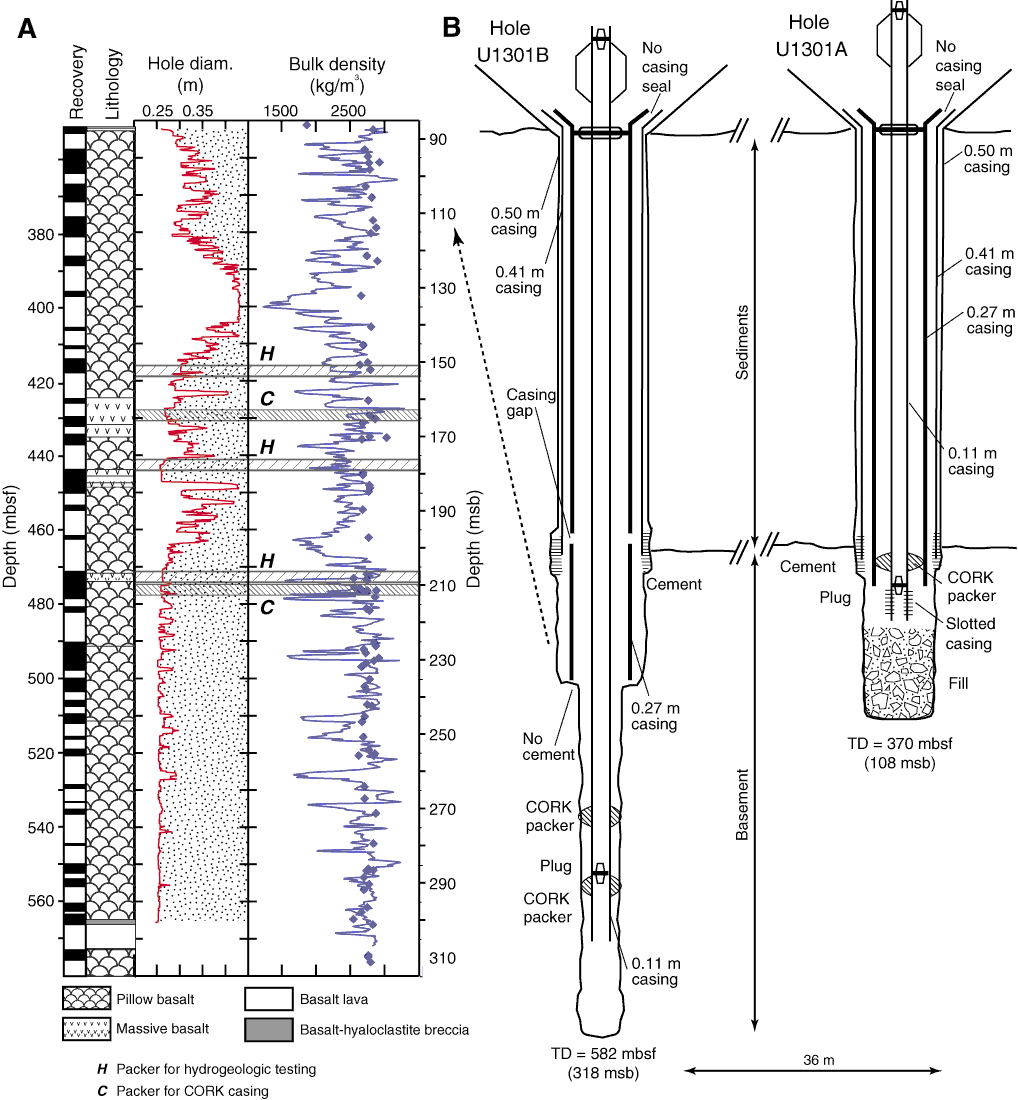
Figure F2. Summary of basement and borehole observatory characteristics in Holes U1301B and U1301A (modified from Fisher et al., 2008). A. Basement recovery, primary lithology, borehole size, and bulk density from Hole U1301B (Fisher et al., 2005a). Basement cores were collected from ~355 to 575 mbsf (~100 to 320 msb), with recovery indicated by black intervals next to depth column. Borehole diameter was measured with wireline caliper tool. Bulk density log (line) and analyses of pieces of rock (diamonds) show evidence for considerable porosity in uppermost basement and a layered basement structure, especially below 470 mbsf (220 msb), with alternating more and less dense intervals. Horizontal bands indicate depths where subseafloor borehole observatory (CORK) casing packers and the drill string packer used for hydrogeologic testing were set against the borehole wall. B. Casing and CORK configurations in Holes U1301B and U1301A. Observatories in both holes lack a critical seal between 0.27 m and 0.41 m casing, which is needed to prevent the flow of cold bottom water into shallow basement or the flow of warm formation fluid out into the ocean. More information on CORK and hole configurations is available in Fisher et al. (2005a, 2005b). TD = total depth.

Previous | Close | Next | Top of page